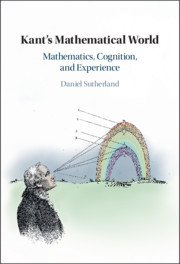In the early decades of the Tang dynasty (618–907), many scholars were involved in official projects whose aim was to produce authoritative editions of canonical texts. As a result, The Ten Canonical Texts of Mathematics and The Proper Meaning of the Five Canonical Texts were presented to the Tang throne, respectively, in 656 and 653, with, in both cases, selected ancient commentaries and subcommentaries composed at the time. In both contexts, there existed mathematical commentaries, and mathematical subcommentaries were composed on them. The aim of this chapter is to analyze and contrast different scholars’ mathematical commentaries and subcommentaries on both the mathematical and Confucian canons. The authors show that in the framework of both projects, exegetes aimed at highlighting the meaning/intention (yi) of the text commented upon. More importantly, mathematical commentaries and subcommentaries allow the authors to show that far from being a loose concept, yi referred to a quite precise notion of “meaning.” However, interestingly, this notion of “meaning,” and the part of the text commented upon in which exegetes located it, show striking differences, depending on whether exegetes operated in the context of the Confucian canon or in that of the mathematical canon. On the one hand, in the context of the mathematical canon, Liu Hui (fl. 263) and Li Chunfeng (602–670) both focused on looking for the meaning/intention yi of the procedures. In the commentary and subcommentary on The Nine Chapters on Mathematical Procedures, in order to fulfill this task, the exegetes relied on diagrams (tu), blocks (qi), and problems (wen), while, in his subcommentary on Zhen Luan’s (fl. sixth century) commentary on Mathematical Procedures of the Five Canonical Texts, Li Chunfeng added problems and reformulated procedures to reveal the yi of Zhen Luan’s procedures, where he believed Zhen Luan failed to do it. Conversely, in the context of the Confucian canon, although Kong Yingda (574–648) and Jia Gongyan (fl. 650–655) also looked for the yi, for them, the yi on which they focused was located in quantities stated by previous commentators (such as Zheng Xuan, 127–200). Additionally, the two sets of exegetes did not practice mathematics in the same way. For instance, by contrast with exegetes who composed commentaries for the mathematical canon, Jia and Kong did not rely on any computational tool. The authors conclude that, although scholars’ aims were partly the same in the two contexts, their understandings of, as well as their commentarial and mathematical practices in relation to, the yi differed. This chapter also explains why the differences established between the mathematical commentaries and subcommentaries in each of the two contexts could also provide promising tools to distinguish the two layers of texts where they were blurred.
